Cold but not bitter. It is a quiet winter’s day on Seven Lakes Drive in Harriman State forest. Ranked high on the short list of favorite local roads, it rewards the driver with a well paved two-lane that snakes through dense woodlands and past picturesque lake panoramas. This day few takers appear interested in sampling its pleasures. Then, faintly at first distinctive exhaust notes announce the arrival of a small but decidedly interesting trio of sports cars.
Behind the wheel of a time machine

Displaying a vibrantly rich and original Guards Red paint, the 1986 Porsche 911 grabs your eye as it flashes across the winter gray brown forest backdrop. Downshifting, it takes Kanawauke circle in its stride emitting the distinctive Porsche flat-six engine timbre and moves east.
Close behind sounding like a Spitfire going up over the English Channel to shoot down “Jerry,” a black 1953 Jaguar XK120mc approaches the circle. Seeking to purchase a firm grip with its slender 6.00X16 bias ply white walls, it exhibits decidedly more caution than the 911 as it downshifts into the curve then barks defiantly as it exits the circle.
Lastly, a Rapid Blue 2020 Corvette, the extroverted long awaited mid-engine high value performance beast, simply proceeds through the circle with a rumble and unruffled nonchalance, then, like that, It’s gone.
Jaguar XK120, Porsche 911 and the new Corvette, a visually striking threesome of iconic sports cars spaced decades apart. Clark Gable posed with a Jag, Steve McQueen with a 911 and today, eager buyers wait for their new Stingray.
It took little coaxing to motivate my friends and lifetime “car guys” Peter Desbets with his Porsche and Bill Whited with his new Corvette to join me in accepting mother nature’s gift of clear, dry roads and a sunny 40 degree day in January.
Framing each of these iconic sports cars in their period of dominance reveals a striking kinship in their perceptions by the public in general and automotive enthusiasts in particular. Each embodies a high level execution of refined engineering for their time. Their strikingly handsome designs made all three highly admired and desired. However, their ability to deliver winning performance served to position each in the public eye as far more than a pretty face. In their time all raced and won at Lemans, Sebring and in myriad competitions around the world. Each projected proven athleticism. Thus defined, they offered the opportunity to purchase an object of general desire and bask in the aura of its attributes and reputation regardless of whether the owner ever took advantage.
The chart comparing their specifications affords a window into the evolution of production sports car design and technology over the last 70 years.
In evolving from analog to digital the march to the electronic future of sports car character and refinement evidences itself in stark fashion when comparing our trio. Door panels and dashboards speak volumes.
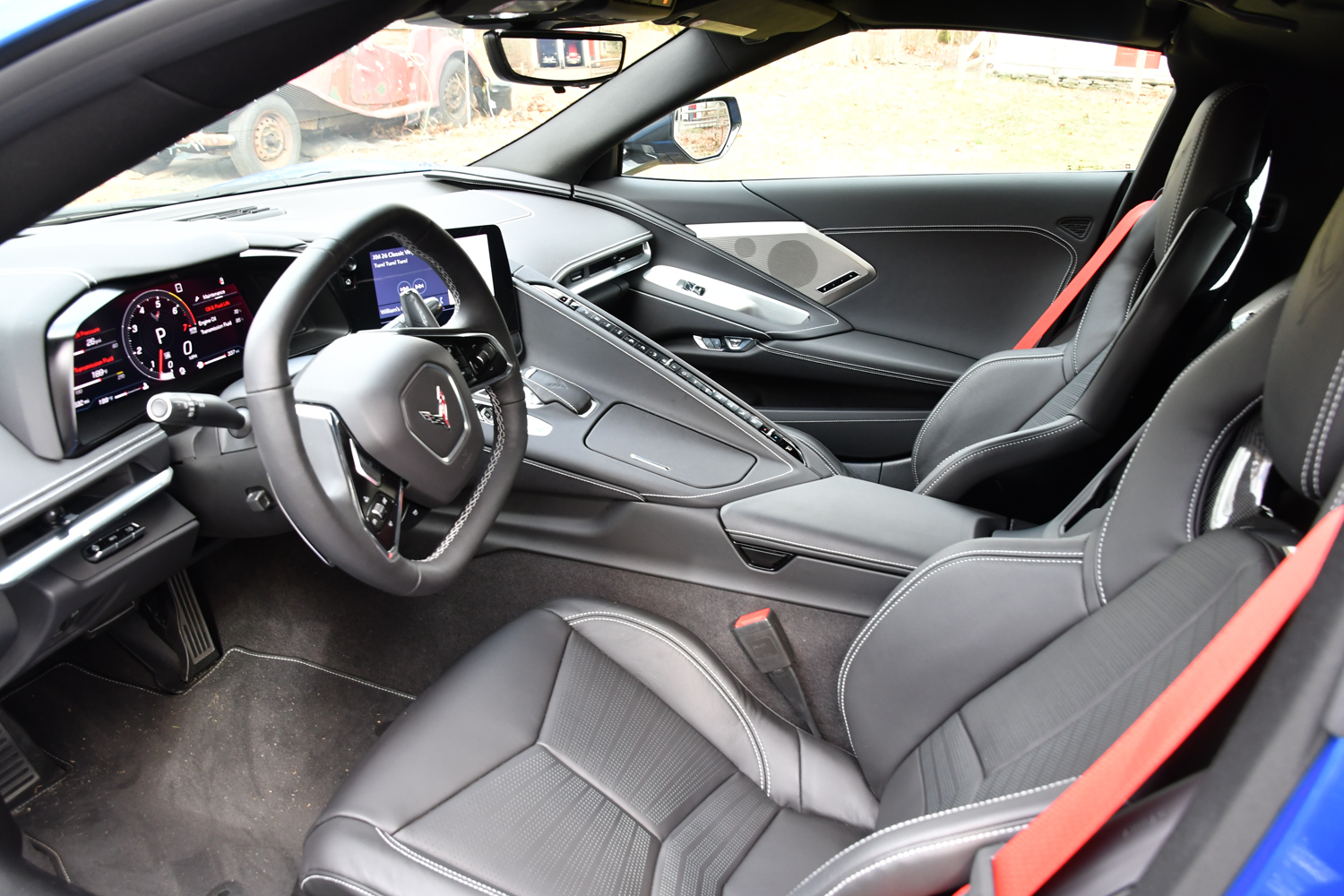
Corvette interior


Porsche interior
For some long-time classic car owners it comes as a jolt when a youth enters your classic car for the first time, looks at you with a tilted head and, then, looks back to the door panel. “What’s that,” an inquiring mind asks while staring at the window crank. And now the question will extend to the door handle as evidenced in Bill’s Corvette. Not new to the 2020 Corvette, but emblematic of the total reliance on electronics, the door handle has yielded to the door button.
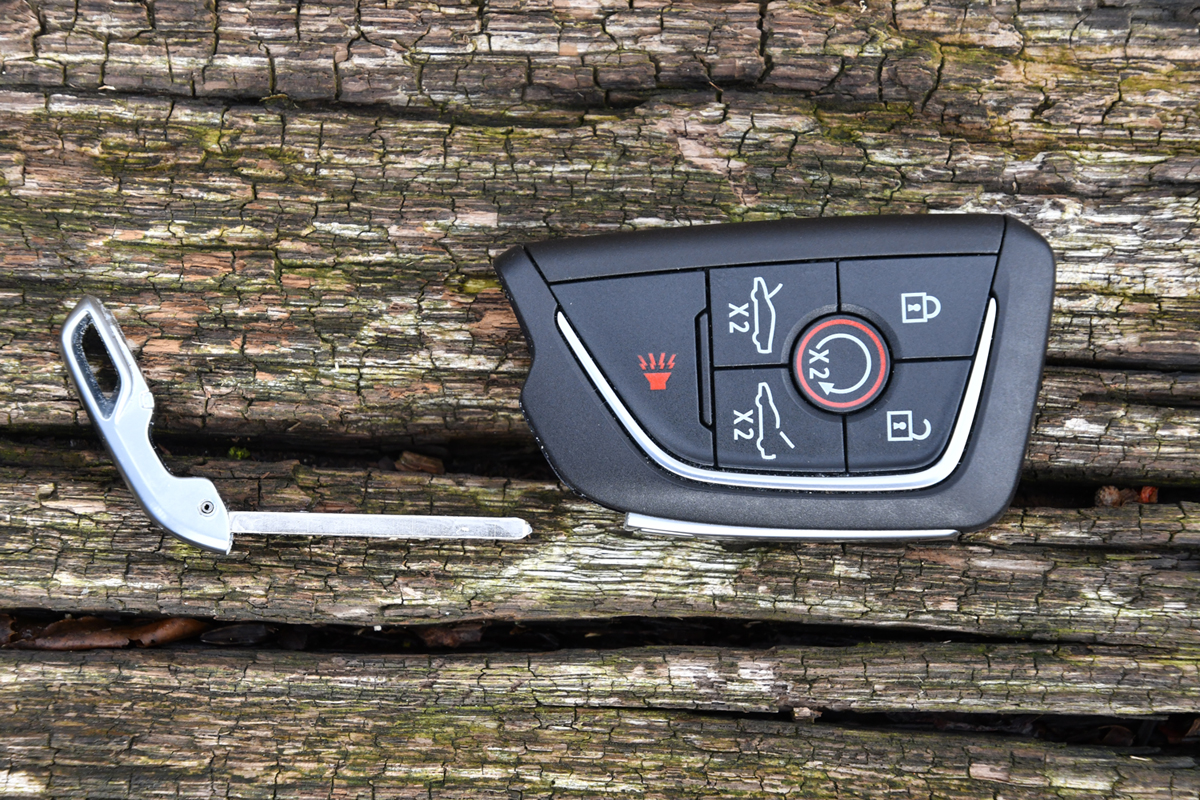
Corvette Fob
Deserving of mention in recognizing the profusion of electronic “conveniences,” looms the question, “What happens if the battery dies while you are in the car?” No worries mate, a mechanical lever hugging the sill can be manually pulled up to release the door. What if you find the battery dead when returning to the car? A mechanical key has been squirreled away in the key fob. The matching key slot lurks inside the quarter panel air scoop.
Dashboards once an array of handsome gauges in a stately setting have been replaced by a thin film transfer screen that can provide a varied array of different looks.
Harriman’s empty roads offer the trio an inviting opportunity to explore the character of their respective rides. Twisting and narrow, the roads also provide a blank canvas against which to assess the degree of driver attention necessary to drive safely.
Jaguar’s XK120 basically came to life on a drawing board during WWII. In today’s world, many drivers operate three-ton battering rams while distracted. For a 70-year old sports car in that environment, the primary safety feature is the driver. If a driver does not understand how to correctly operate this cross between a sports car and a Faberge egg, the car will not last very long and neither will the driver. It is not a one-hand on the wheel while resting your elbow on the door driving experience. It demands two-hands on the wheel and your head on a pivot. Sitting upright on narrow tires, with a strong engine and a twitchy suspension, everything feels immediate and edgy.
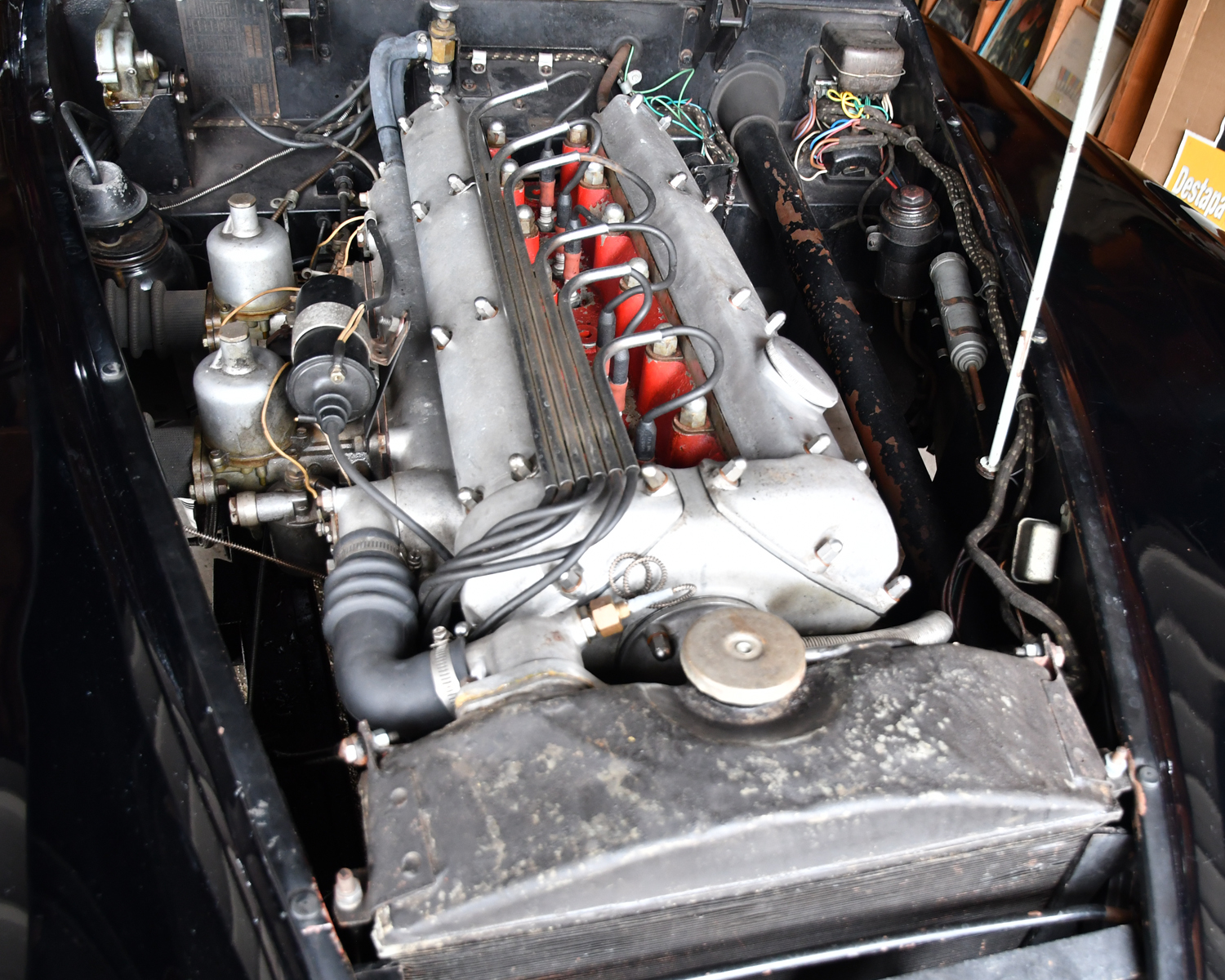
Jaguar engine
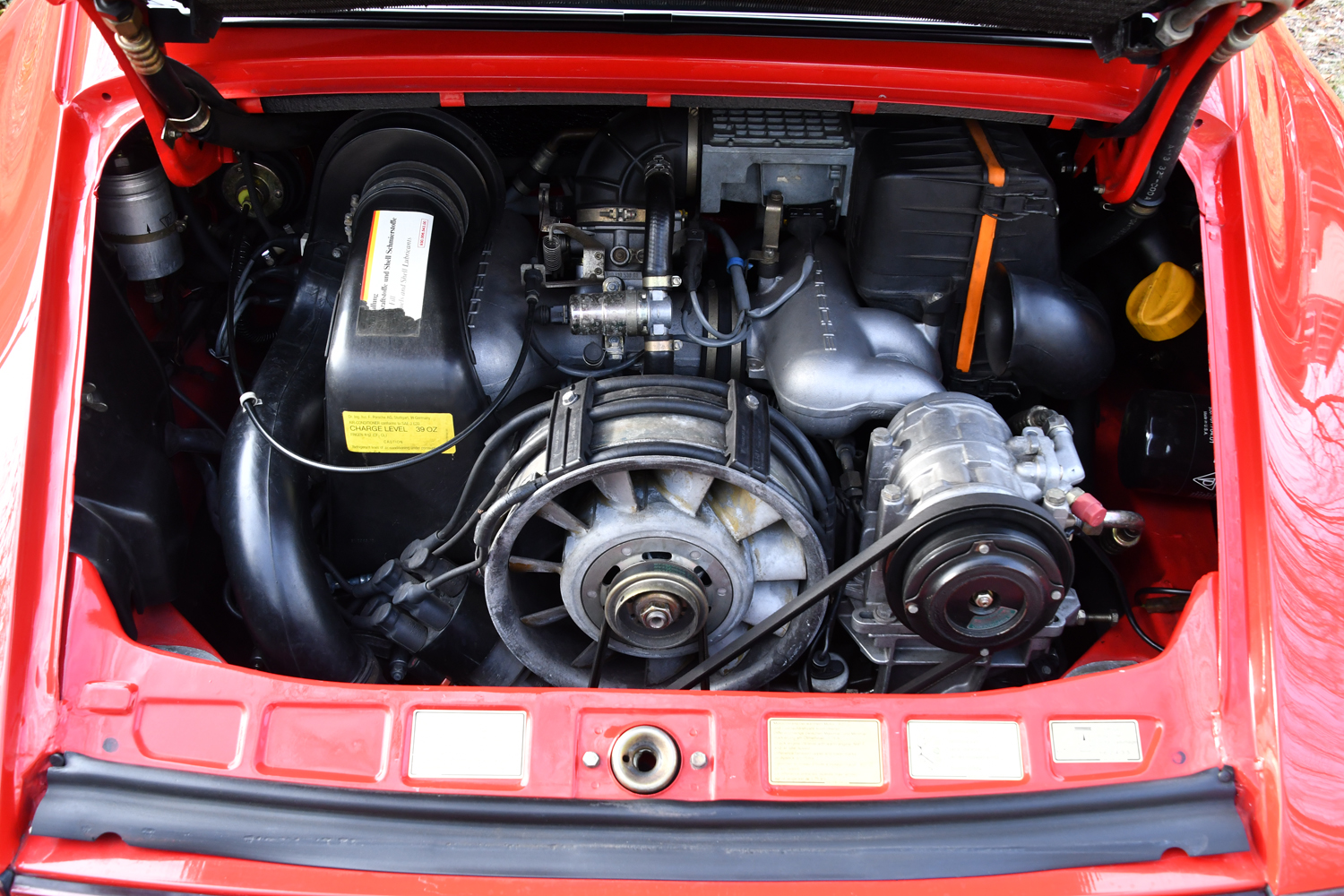
Porsche engine
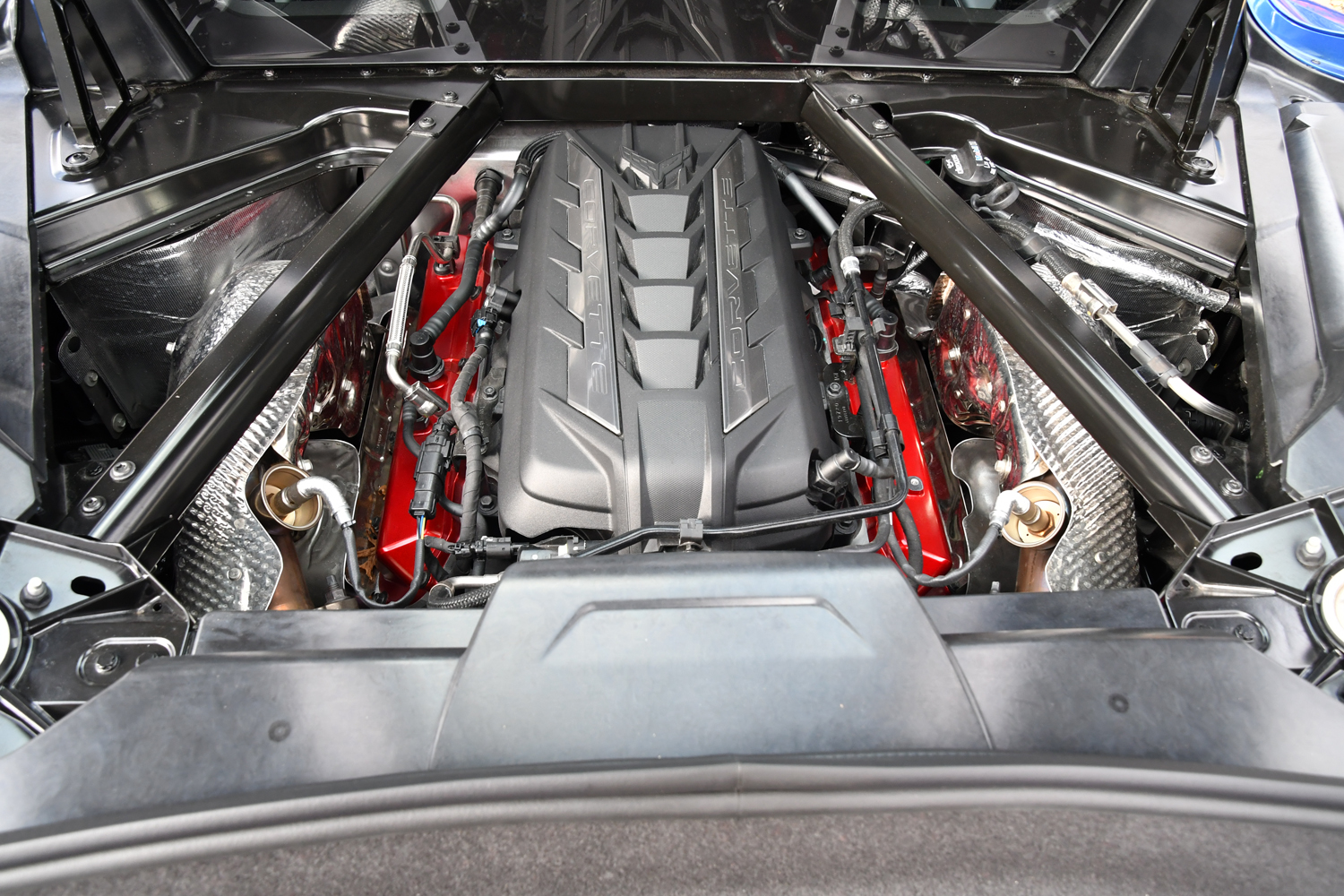
Corvette engine
The Corvette on the other hand has a threshold of urgency quantum levels beyond that of the Jaguar. To achieve an urgency twinge would require having passed through the “I know what I am doing is dangerous and stupid zone.” Unlike the Porsche that feels light and tossable, the Corvette conveys the sensation of a great mass yet responds with brilliant agility and ease all the while communicating a reassuring solidity. It communicates an extraordinary ease. Though on today’s roads, driving the Corvette requires attention, though it does not demand it. Bill says, The car stays in its lane. Stops immediately. Reacts quickly and smartly, all with one foot.
However, as we move through an age where technology often exceeds man’s ability to assimilate it, the Corvette possesses the ability to frighten. Bill tells the story of his experience taking his Corvette to redline. Having passed the 500-mile break-in period, Bill decided to give it a shot. He finds himself on a familiar backwoods straightaway.
Bill says, “I have the radio on. I’m kind of relaxed and laid back. No one is around so I stop. Check again. No one. I nail it. The G-force made me dizzy. I was looking to go 0 – 60. I hit the brakes around 50.” Bill, who has had a lot of fast cars in his life including a big block ’67 Corvette he still owns, says, “I was going to pass out. The traction and acceleration was unbelievable.”
However, the automatic and all of the adaptive technology afford some detachment. It certainly lack the engagement of the 911. Peter who has also driven Bill’s Corvette says, “My 911 offers far more engagement with a whole lot more road feel.” Pete contends that the 911 demands the driver’s attention. The pedal location demands precision in engaging the clutch. With no ABS, it demands braking modulation.
Response to the road condition truly separates the three. The Corvette just tracks straight regardless of undulations or road imperfections. The Porsche yields slightly to the mind of the road requiring minor correction. With its WWII suspension design and bias-ply tires, the XK120 will pretty much go where the road directs without continuous corrective input from the driver.
Completing the day at Harriman, everyone pulls over to take the traditional “drive” photo. The fairly unusual collection draws considerable attention and sparks a discussion of how people react differently to the cars.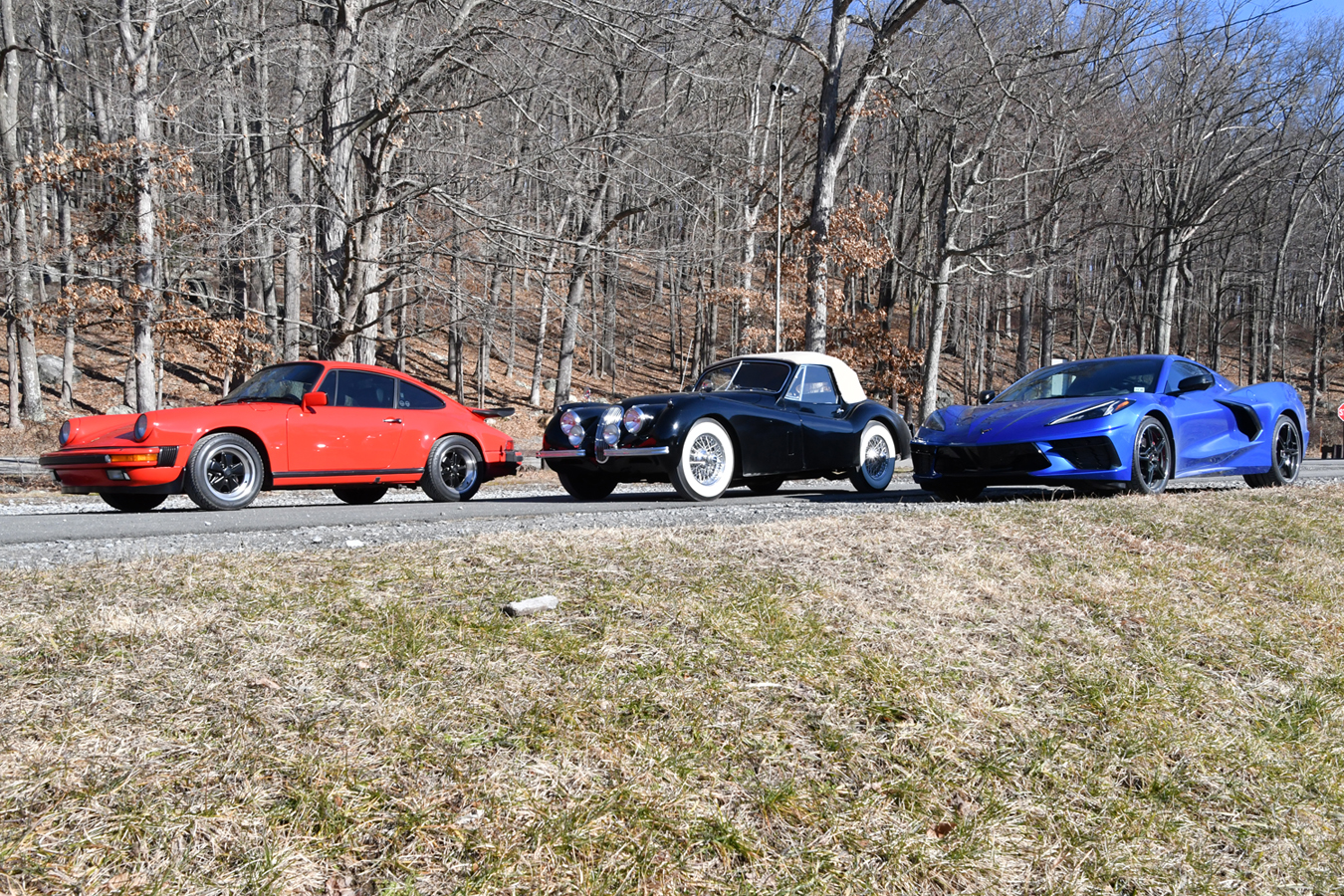
It is agreed that the 911’s iconic shape resides in the consciousness of the general population. That said Peter calls out two groups that respond viscerally to his car. First. being true Porschephiles who will come up and tell him about his car. Young males of Asian descent fill out the second group. Peter says, “If they pull up next to you regardless of what they are driving. They give you the thumbs up. Walking by, they will most often stop to ask about it.”
Bill says, “Seeing the Corvette, even if they don’t know it is a Corvette, they know it holds some kind of special place in the fast car Ferrari world. Ferrari being the only other brand name they may know.”
Peter says, “I think when people look at your Jaguar they think it is older, say from the ‘30s. People who don’t really know cars think Great Gatsby.”
In a curious way while we shared a common road, we experienced the day driving in three different decades.

Great read as always, Burton!
Thank you Mark. Much appreciated.
Great work Burton ! Very good write up. Most will appreciate each car especially the way you described them so well. I have a different opinion of Peters regarding the engagement with the all new Corvette. I understand Peter’s point to some degree, I have owned three 911’s over the years and my 1989 911 Coupe I recently sold for the room in my garage for the new Corvette. The 911 is a different engagement then the Corvette, this is very true however when driving the New Corvette utilizing the paddle shifters as a manual is amazing and really is like driving a manual without the third pedal, the trans is that quick and direct and you can hold it in gear as long as you need and up shift it when you like. The sound of that V8, there’s really nothing like it.
Best regards
Bill
Thank you so much for providing an informed perspective from a great Car Guy possessing extensive experience with many cars and over many miles. Much appreciated.